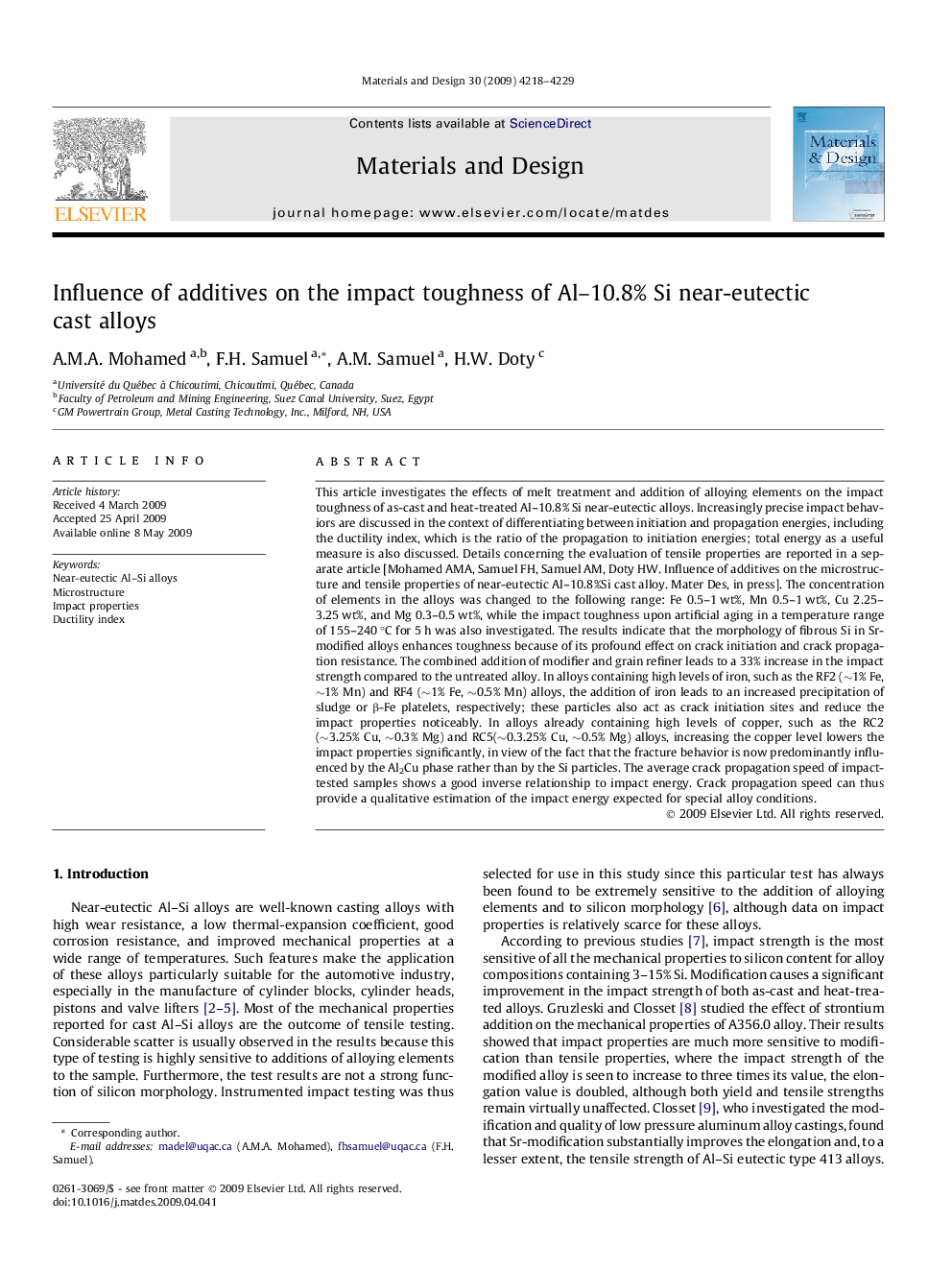| کد مقاله | کد نشریه | سال انتشار | مقاله انگلیسی | نسخه تمام متن |
|---|---|---|---|---|
| 832410 | 1470368 | 2009 | 12 صفحه PDF | دانلود رایگان |

This article investigates the effects of melt treatment and addition of alloying elements on the impact toughness of as-cast and heat-treated Al–10.8% Si near-eutectic alloys. Increasingly precise impact behaviors are discussed in the context of differentiating between initiation and propagation energies, including the ductility index, which is the ratio of the propagation to initiation energies; total energy as a useful measure is also discussed. Details concerning the evaluation of tensile properties are reported in a separate article [Mohamed AMA, Samuel FH, Samuel AM, Doty HW. Influence of additives on the microstructure and tensile properties of near-eutectic Al–10.8%Si cast alloy. Mater Des, in press]. The concentration of elements in the alloys was changed to the following range: Fe 0.5–1 wt%, Mn 0.5–1 wt%, Cu 2.25–3.25 wt%, and Mg 0.3–0.5 wt%, while the impact toughness upon artificial aging in a temperature range of 155–240 °C for 5 h was also investigated. The results indicate that the morphology of fibrous Si in Sr-modified alloys enhances toughness because of its profound effect on crack initiation and crack propagation resistance. The combined addition of modifier and grain refiner leads to a 33% increase in the impact strength compared to the untreated alloy. In alloys containing high levels of iron, such as the RF2 (∼1% Fe, ∼1% Mn) and RF4 (∼1% Fe, ∼0.5% Mn) alloys, the addition of iron leads to an increased precipitation of sludge or β-Fe platelets, respectively; these particles also act as crack initiation sites and reduce the impact properties noticeably. In alloys already containing high levels of copper, such as the RC2 (∼3.25% Cu, ∼0.3% Mg) and RC5(∼0.3.25% Cu, ∼0.5% Mg) alloys, increasing the copper level lowers the impact properties significantly, in view of the fact that the fracture behavior is now predominantly influenced by the Al2Cu phase rather than by the Si particles. The average crack propagation speed of impact-tested samples shows a good inverse relationship to impact energy. Crack propagation speed can thus provide a qualitative estimation of the impact energy expected for special alloy conditions.
Journal: Materials & Design - Volume 30, Issue 10, December 2009, Pages 4218–4229